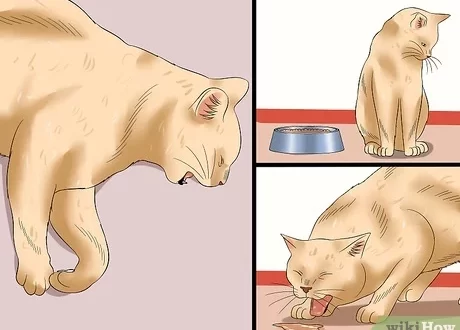
Vlasomed in cats
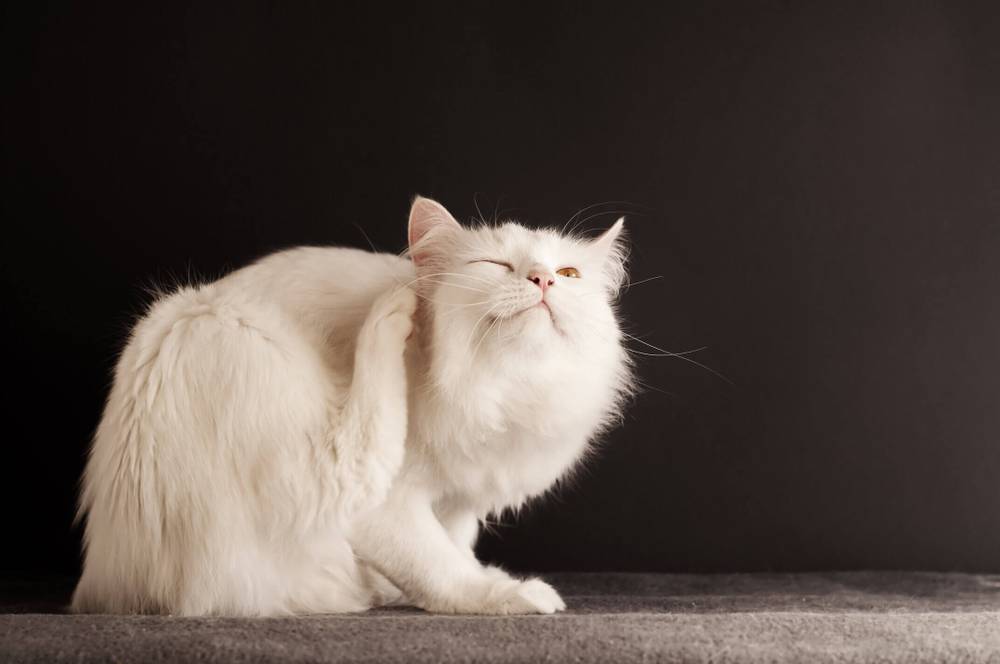
Contents
Withers in cats: basic information
Rarely seen;
Characteristic for stray cats;
The main symptom is severe itching and restlessness;
Can cause anemia in an animal.
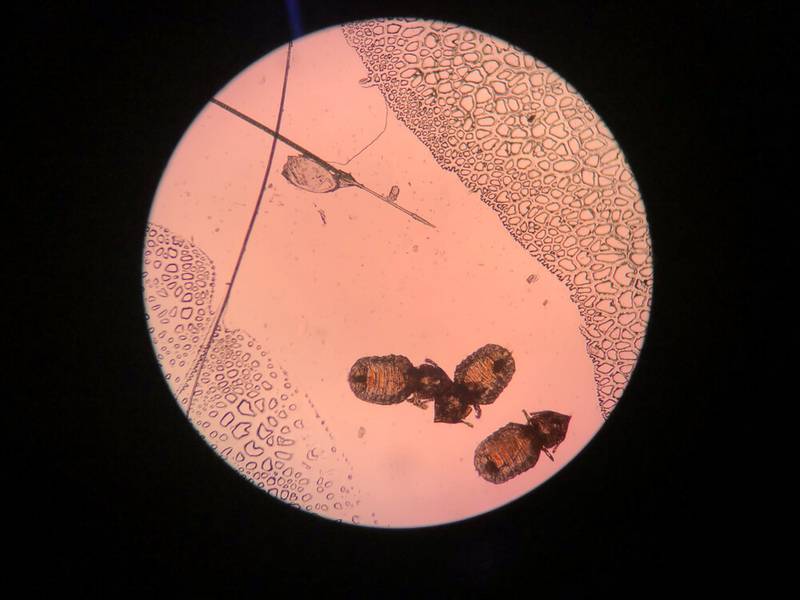
Causes of the disease
Vlaseed is an insect from the order of lice and lice, which is a species-specific parasite of mammals. Cats are characterized by a special species Felicola subrostratus, which parasitizes only this species of animals. They cause felicosis in cats. In total, about 2500 species of withers are known in the world, and about 50 species are found in mammals, the rest are characteristic of birds.
Vlas-eaters are small insects without wings, with a flat body 1-2 mm long. The head is flat, large, wider than the chest, is a quadrangle. The mouth apparatus of the parasite is of a gnawing type, therefore the parasite feeds on skin particles, hair, and various secretions, including blood.
The development cycle of the parasite is as follows: females lay eggs, firmly attaching them to the fur of animals. The eggs hatch into larvae, which make several molts, after which they turn into an adult insect. The entire development cycle takes place directly on the animal itself and takes about a month. It is important to know that, once in an environment with wool, eggs can be stored for a long time. Infection of cats occurs through direct contact with sick animals, as well as through care items and bedding.
It is interesting to note that in modern taxonomy there are still disputes about which order the lash eaters belong to. That is why in the literature, when mentioning lash eaters in cats, instead of the term “felicolosis” you can find “trichodectosis”, but both terms are synonymous.
Withers in cats settle on the surface of the skin and feed on particles of the epidermis, secretions from the sebaceous glands and blood. Vlice not only cause direct harm to the animal, causing severe anxiety, damage to the skin and coat, itching and allergic reactions, but they are also carriers of infectious and parasitic diseases, most often a tapeworm called “cucumber tapeworm”. Infection occurs by ingestion of parasites during grooming or biting into itchy areas of the skin.
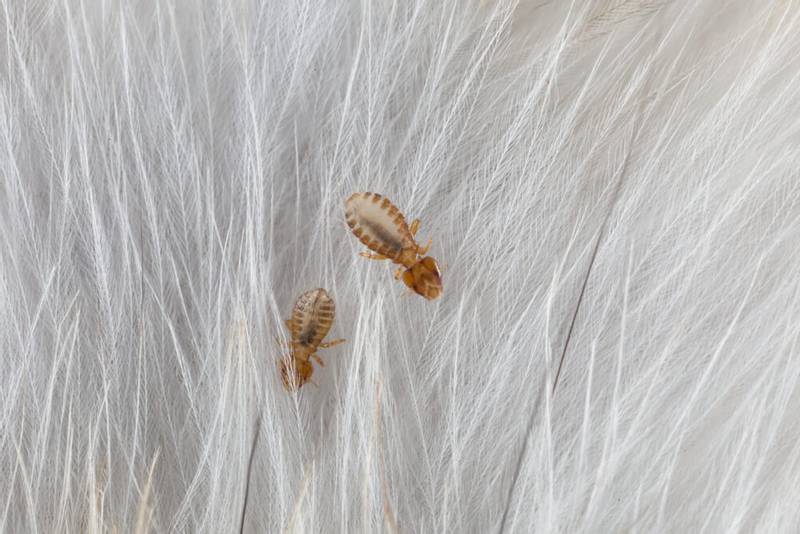
Symptoms
It is difficult not to notice the symptoms of the presence of lice in a cat. At the initial stage of the disease (a small number of insects), the cat may show signs of anxiety, often licking itself or itching. When examining a cat, you can identify signs of seborrhea, areas of baldness, as well as characteristic scratches. In some cases, disheveled hair, crusts, small vesicles with pus may be present. Sometimes cats develop an allergic reaction to the saliva of parasites and, as a result, weeping dermatitis develops. Also, since the lice feed on blood, too, with a heavy lesion, cats can develop anemia and, as a result, the pallor of the visible mucous membranes and weakness.
When examining the wool, you can find small white grains, shaped like rice, which are parasites or their larvae. If you suspect that a cat has lice, you should immediately contact a veterinary clinic for diagnostics, an accurate diagnosis and the appointment of optimal treatment.
Diagnostics
The causative agents of the disease must be distinguished, firstly, from other external parasites:
fleas;
khayletyell;
notohedrosis;
demodex.
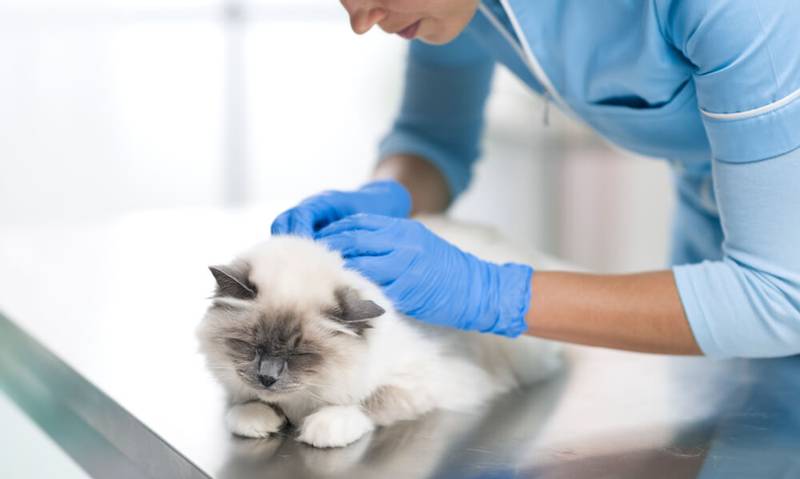
Diseases such as:
food allergy;
atopic dermatitis;
dermatophytia.
Microscopy is used to make a diagnosis: samples of affected wool and an adhesive test are taken for analysis. If the microscopy results are negative, a trial treatment with antiparasitic drugs is performed.
It should also be borne in mind the secondary complications that can cause the presence of withers in a cat: these include eosinophilic granuloma and secondary bacterial contamination of the skin as a result of itching and scratching – superficial pyoderma. To exclude these pathologies, a cytology of smears-prints from the affected areas of the skin is performed.
Treatment of cats from withers
Getting rid of lice is easy enough, but you need to follow certain rules.
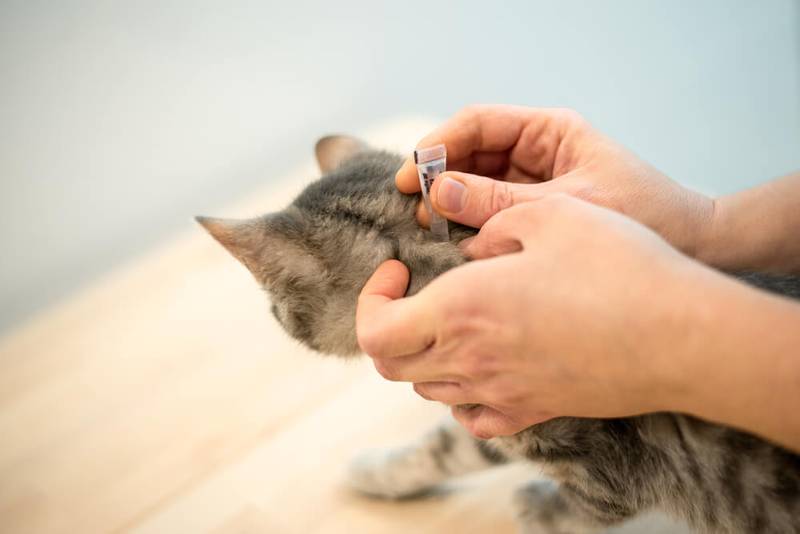
It is strongly not recommended to use various folk remedies, untested drugs that can lead to illness and even death of the animal. You should also make sure that the drug you are using is approved for use in cats: for example, drops containing pyrethrins or pyrethroids are popular for dogs, but these compounds are toxic for cats!
It is necessary to treat not only the sick cat, but also all other cats in the house and in contact with your cat.
Damaged hair is best removed, as lice eaters stick their eggs tightly to the fur.
The traditional treatment for lice in cats is a concentrated solution of hydrogen sulfide lime (lime sulfur). The concentrate is thoroughly shaken, then diluted with water in a ratio of 1:33, then the whole animal is carefully processed with a sponge. The use of a concentrated solution is strictly not recommended. It is also very important not to let the cat lick the solution during treatment. After treatment, a protective collar is put on the cat until the preparation is completely dry. The drug is safe for cats and kittens, but can cause unwanted allergic reactions, and also has a very unpleasant odor, so the treatment should be carried out in well-ventilated areas. It is also worth noting that the drug can stain the coat and is not washed off for a long time, therefore it is not recommended for use in white cats.
Injections of ivermectin have previously been considered popular and inexpensive, but there are many reports in the literature about the toxicity of this drug, and therefore it should be used with caution.
The most popular remedies for lice eaters for cats are modern drops on the withers containing such active substances as selamectin, imidacloprid or fipronil. The course of treatment with these drugs in the presence of lice should be chosen by the doctor, since it often differs from that recommended in the instructions.
New products on the market include drops on the withers containing fluralaner in their composition. A feature of this drug is long-term effectiveness (12 weeks after treatment) and a minimal risk of side effects, since this drug is gradually excreted from the body in unchanged form, without interacting with the internal organs of the animal.
With a pronounced invasion of the withers and weakness in the cat, a general blood test is recommended. In the presence of anemia, good nutrition and the use of additional supplements containing trace elements are recommended. Severe anemia may even require a blood transfusion.
To control the development of secondary complications (allergic dermatitis, eosinophilic granuloma, superficial pyoderma), it may be necessary to prescribe hormonal and antibacterial drugs, but only a doctor can prescribe these drugs.
It is important to pay special attention not only to the treatment of the pet itself, but also to the treatment of the environment. The fact is that the eggs of the lice eaters can remain in the environment for a long time (on average 2-4 months), new parasites develop from them, as a result, the infection of the animal occurs again. To treat an apartment, it is advisable to purchase special sprays in veterinary pharmacies that will help get rid of parasites in the house. Particular attention should be paid to hard-to-reach places – these are all kinds of corners, cracks, baseboards. A thorough wet cleaning is necessary: a vacuum cleaner will help remove eggs from carpets, and all bedding on which cats sleep should be washed. It is also necessary to clean all objects and toys used by the cat.
As for the prognosis of the disease, it is good. The most important thing is to make a correct diagnosis and exclude secondary complications, it is quite easy to cope with the parasite itself.

Prevention
The main measures to prevent infection with lice and other external parasites include the following:
If the pet has access to the street – the constant (according to the instructions) application of drops on the withers or wearing an insecticidal collar. You should pay attention to the composition of the preparations: if it contains only herbal ingredients, then the protective properties of this medicine will be low;
Avoid contact of your pet with street and sick cats;
Also, an equally important aspect is the correct maintenance, a full-fledged balanced feeding and regular inspection of your pet’s coat for any lesions.
Danger to humans
Vlas-eaters are species-specific parasites, which means that each species of animal has its own species of parasite. Therefore, when it hits a person, the feline lice cannot eat and quickly dies. But cases of the development of an allergic reaction to these parasites are described, therefore, when handling and communicating with infected cats, it is imperative to follow all precautions: wear gloves and wash your hands thoroughly.
The article is not a call to action!
For a more detailed study of the problem, we recommend contacting a specialist.
Ask the vet
December 11 2020
Updated: February 13, 2021




